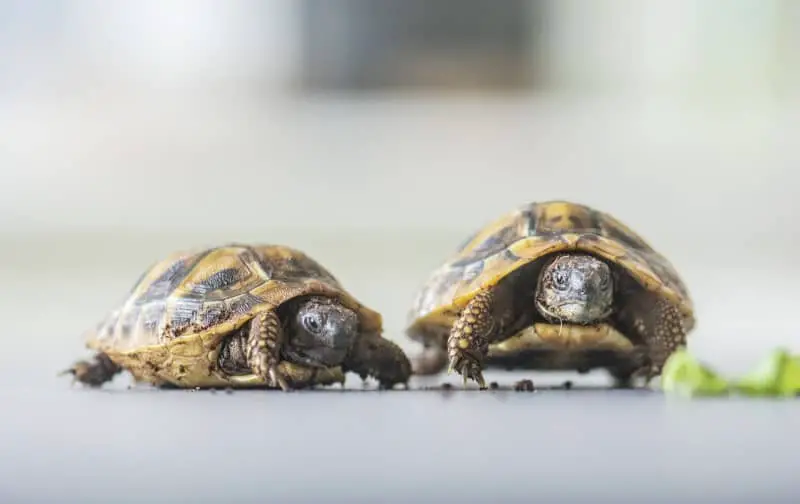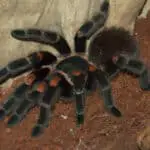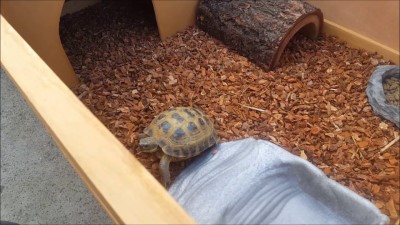Tortoises are solitary animals and will thrive on their own without feeling lonely. Thus, before getting your pet some company, you may need to consider whether they will also be comfortable with your decision. Whether you can keep two tortoises together or not, we understand it is a matter of concern that requires attention.
Keeping two tortoises together in one enclosure is possible, but this depends on their size, gender, and species. However, this may not be a good idea due to the risk of fights, disease, and parasite transmission.
If you want to know whether you can keep two tortoises together, this is the ultimate guide for you. We will help you understand whether you can house tortoises of the same gender and species together and which different species can thrive in one aquarium. Read through the rest of the sections to find out all the answers you need.

Can You Keep Differently Sized Tortoises Together?
Size is an important consideration when housing two tortoises together. This is because these creatures are territorial and can intimidate each other.
Keeping a smaller and big tortoise together will result in fights over the shared facilities. This will mostly be the case if you house two males together. The two tortoises will fight over everything, and the smaller one will most likely sustain injuries in the fight; hence, not worth the risk. Also, such intimidation can stress your pet and adversely affect its health.
Juvenile tortoises can coexist with each other during their early years. Whether you breed or purchase them and keep them in one aquarium to grow together, you will notice a peaceful coexistence between your pets.
However, this will be short-lived, since, over time, your pets will start fighting and harassing each other. When you notice this, start preparing another enclosure and separate them to stop the fights.
Can You Keep Tortoises of the Same Gender Together?
When young, it may be difficult to tell the gender of your tortoises, and you may end up keeping the same sexes together without any problems. However, when your pets mature, gender becomes an important consideration as far as housing is concerned.
Keeping same-gender tortoises together in one enclosure will yield different results depending on whether they are male or females. If you keep two males together, you should expect them to fight, given that males are territorial and will want to express dominance over each other. Some males will fight, and once they make peace over who is the dominant one, they will coexist peacefully.
However, while they may appear to be peacefully coexisting, the weaker one will usually feel intimidated. To deal with this, consider a big enclosure if you insist on housing them together to ensure they can stay as far away as possible from each other. Alternatively, you can add several females in the aquarium to distract the males. This, however, can be a challenge, given that few people can afford to purchase and care for many tortoises.
While females can coexist peacefully with males, you need to consider the gender ratio during housing. You should avoid keeping a single male and female together, as the male will become aggressive and destructive, especially if the enclosure is also small.
In such a scenario, the male will constantly mate the female to unnatural levels. These levels are high enough to kill the female if you do not rescue it in good time. While the female may try to run to avoid the male, the male will continue pursuing her and mate repeatedly, tearing and ripping her vent, which can result in infection.
If you have the time and money to purchase tortoises, you can consider a minimum of four pets in one enclosure. This should comprise three females and one male. You should avoid balancing the ratio by buying two males, and two females, as the males will fight for dominance. The 3:1 female to male ratio will make the male remain dominant and give each female a break from mating, given that the male will have a pool of partners to select.
Can You Keep Two Species of Tortoises Together?
Once you start keeping tortoises, you will find them adorable and you may want to keep as many as you can. This is perfectly fine as long as you can care for them properly. A common concern for most tortoise owners is species diversity in a common enclosure.
If you want to buy a different tortoise species, you should not mix them with the current species in captivity. Putting different species in one enclosure will result in fights, especially if there is a size difference.
Also, there is an increased risk of infection transmission between the species. While one species may carry an infection silently, this infection may be severe to the other species. For this reason, it is advisable to quarantine your new pet for up to six months before putting it together with your other pet to allow enough time to detect any infections and treat them.
Another reason why you should not mix tortoise species together is that each species requires different care. For instance, while Russian tortoises thrive in cool temperatures and lower humidity, the Sulcata tortoises require a warm and humid environment. Housing these two pets together will be difficult, as it may not be possible to balance the enclosure conditions for both species to be comfortable.
Tortoise fights may also increase if you house two tortoises of different species together. This is because of the temperamental differences between species. For instance, while a Sulcata and leopard come from the same territory, housing them together will breed disaster.
Sulcata tortoises are territorial and destructive compared to leopards, which are smaller and calmer, and the Sulcata tortoises will bully the leopards. If you house these pets together, aggression may go unnoticed and be mistaken for affection. You may find the Sulcata constantly following or cuddling the leopard when, in the real sense, they are bullying them.
Can You Keep Hermann, Russian, and Horsefield Tortoises Together?
In addition to disease and fights, mixing tortoise species is not a good idea due to their physical differences. Some species have stronger shells, while others have stronger and thick skin. This implies high chances of injury, especially during mating.
Horsefield tortoises are very aggressive during mating; therefore, housing them together with either Russian or Hermann tortoises may result in severe injury, and, at times, death during mating.
Keeping a Russian and a Hermann tortoise together is also a bad idea, given that they come from different environments. While a Russian inhabits the temperate deserts, the Hermann thrives in the northern Mediterranean coastal countries. This means that the Hermann tortoise will thrive in warm environments while a Russian can handle both cold and warm temperatures. Bringing the two in one enclosure will make it uncomfortable for them, as the conditions may either favor one over the other or none of them altogether.
Hermann and Russian tortoises also have different temperaments. The Hermann is outgoing and likes to be out and about, and the Russian tortoises can be both shy and aggressive, depending on the individual tortoise. Housing the two will likely result in bullying, especially if you house an outgoing Hermann with a shy Russian tortoise. Also, both species have different immunity to bacteria and parasites, and what may be severe to one pet could be mild to the other.
Read more: 14 Best Pet Tortoises For Beginners: Small To Large (With Pictures)
Finally
Tortoises are solitary pets and will be comfortable living alone all their life. However, if you love tortoises and want to keep as many as possible, you should consider their gender, size, and species. For instance, it is best to house more than two female tortoises with one male in each enclosure for peaceful coexistence. Also, if you want to host more than one breed, you should avoid housing two species of tortoise together in one enclosure.








